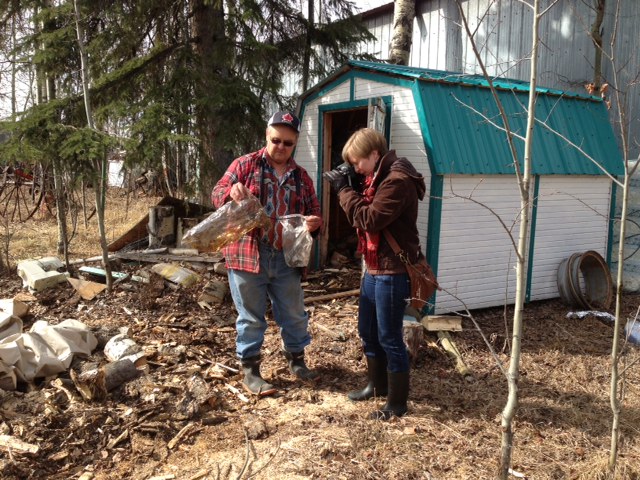Just after the Plains Midstream spill into the Red Deer River north of Sundre, Alberta, a Global News reporter listening to the radio heard a commentator casually mention that this sort of thing happens all the time.

We decided to find out just how common such incidents were. This story is the result of an 11-month investigation.
An initial Freedom of Information request – filed June 8, 2012, the day after the Sundre spill – asked Alberta Environment and Sustainable Resource Development for information on all reported spills from the oil and gas industry, from 2006 to 2012.
About a month later, Global News was quoted a fee of over $4,000 for this information. In discussions with the department, it turned out this high fee was because the department was unable to provide the information in an electronic format: Although it maintained a database of spills, the departmental process was to print out individual reports on paper, and to charge the requester for every page.
After negotiations, Global News eventually received a big box of documents, containing 711 pages of printed records of spills, for $262.
It took a month to convert these documents into something machine-readable. With that conversion came an important revelation – there was no record of some of the biggest recent spills, such as the Plains Midstream spill near Peace River or the Sundre-area spill that had sparked the FOI request in the first place.
Responding to queries, Alberta Environment and Sustainable Resource Development staff said the best source for this information was the Energy Resources Conservation Board. Global News filed another Freedom of Information request with the board in January 2013, only to be referred back to Alberta Environment.
- Posters promoting ‘Steal From Loblaws Day’ are circulating. How did we get here?
- Solar eclipse eye damage: More than 160 cases reported in Ontario, Quebec
- Video shows Ontario police sharing Trudeau’s location with protester, investigation launched
- Is $10/day child-care at risk of ‘derailment’? Report spurs questions
Further discussions determined that information on spills had been available for purchase from ERCB the whole time for $367.
The database contained all kinds of information on spills, going back several decades. One hitch came with the location data: We knew we wanted to map the spills, but doing so proved surprisingly difficult.
All spill locations were given as coordinates using Alberta’s unique Alberta Township System. In order to map them, we needed to be able to convert these coordinates to standard latitude and longitude points.
You can purchase a base map of ATS coordinates, which would enable conversion, from a private company to whom the government has given the right to sell these maps. A full version costs $1,000. We looked for alternatives but online tools proved impractical for plotting more than a handful of points, and we had tens of thousands.
Calls to the federal Department of Natural Resources proved unfruitful: They said they had no map of these coordinates, either. Eventually, we were referred to Alberta’s Sustainable Resource Development department, where someone converted the file for us.
We also needed to find landowners with extensive experience of oil spills. News archive searches were helpful in finding leads, and cold-calls did the rest. A trip to Calgary and Sundre was planned to meet and interview officials, industry groups and landowners.
The interactive maps for the project were executed by designer/developer Kate Grzegorczyk, who used files uploaded to Fusion tables as base data. The sheer volume of points proved a challenge on several occasions, as loading too many was taxing to computers. This was addressed in two ways – by aggregating data into a heat map, and, for the detailed point-by-point map, by limiting the zoom level. Keeping users tightly zoomed in meant that only a few points needed to be loaded at a time.
Using KML files produced through Google Fusion Tables, the Global Toronto news graphics department produced the time-lapse video of Alberta’s crude oil spills, and reporters from both television and online contributed to the reporting of the story.
Series Credits:
Reporting: Leslie Young, Anna Mehler Paperny, Francis Silvaggio
Interactive graphics: Kate Grzegorczyk
Web development: Imran Nathani
Videography: Mike Gill
Video editing: Kevin Buffitt
Animation: Todd Morgan


Comments